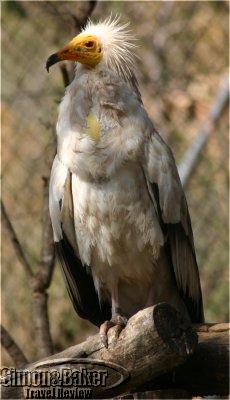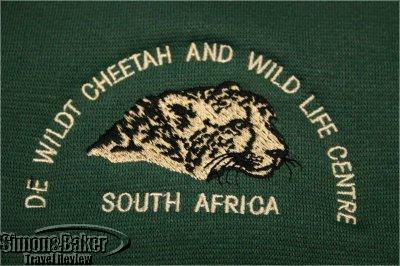

Our visit to this 168-hectare wild life refuge home of cheetahs, wild dogs, hyenas, servals, vultures, duiker and other wild animals on the outskirts of Pretoria was educational, lively, inspirational and fun. Established by Ann van Dyk to care for wild animals in need of shelter, De Wildt grew from 50 hectares to its present size. It is famous as the first place in the world where cheetahs and king cheetahs, who have a rare pelt pattern, in captivity bred successfully. Founder van Dyk and her staff’s generous dedication to the animals and their long term survival was engaging.
Though the facility gladly welcomed guests and prompted them to tour the Centre and learn about them, it was apparent to us, that their goal was to do as much as possible to ensure that some of the fragile species sheltered there survive the continuing encroachment of civilization on their habitat. It was a worth the drive to De Wildt to see these beautiful and lithe animals, so elusive in the wild, running around, playing and feeding within feet of our vehicle.
Description A privately owned, non-profit, non-governmental organization, De Wildt was funded by “self-endeavor and sponsorship.” Twenty-four staff members oversaw the Centre and its many animals including 120 cheetahs (27 cubs), 87 wild dogs, vultures, brown hyenas, grey duiker, wild cats, servals, African civet, nyala, ostrich, leopard tortoise, impala, suricate (meercat), and honey badgers. Visiting birds: cape griffin, Egyptian,vulture, African white back, lappet-faced and Indian black lappet-face vultures.
Established 1971
Handicapped Access : Yes. De Wildt offered programs for the blind and handicapped.
Location In the outskirts of Pretoria . I n the foothills of the Magaliesberg in South Africa ‘s North West Province
Owned-Managed Ann van Dyk. There was also a management committee of 10 honorary members including wildlife veterinarians and zoologists.
Size 168 hectares
Transportation We drove to De Wildt, where we parked our car. Inside the Centre, we walked and toured the facility on an open air game viewing vehicle.
De Wildt “housed” various species of formerly and currently endangered animals bred in captivity (cheetah, wild dogs, Egyptian vultures) in large cages and fenced areas. Since they first bred in captivity, more than 600 cheetah cubs have been born at De Wildt.
Other De Wildt offered several fundraising options to supporters including animal adoption, sponsorship, bequest and donation programs. Participants of the adoption program, for example, donated funds toward the type of animal of their choice and received recognition at the Centre, a certificate and VIP treatment when they visit the facility. De Wildt established a nearby lodge for the convenience of guests on extended visits.
Reviewers Article by Elena del Valle
Photographs by Chester Godsy and Joni Johnson-Godsy
Would You Visit This Attraction Again? Yes
Contact Information
- PO Box 16
- De Wildt
- 0251
- South Africa
- +27 12 504 1921
- +27 12 504 1921
- (same as phone)






